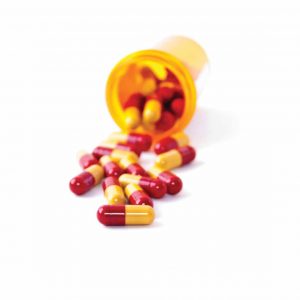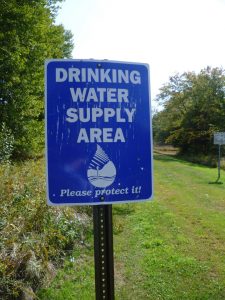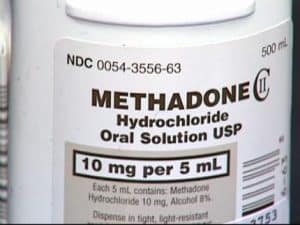Drugs in Drinking Water
 Pharmaceuticals (prescription, over-the-counter, and veterinary drugs) and personal care products (products such as cleansers, fragrances, and cosmetics used for personal reasons) in drinking water have been a subject of much concern recently. Studies have shown that a myriad of pharmaceuticals including antibiotics, anabolic steroids, anti-anxiety medications, hormones, and anti-seizure medications have been found in the drinking water supplies of at least 41 million Americans in 24 major metropolitan areas, from east coast to west coast. And while these numbers alone are alarming, they represent only a very small portion of the problem.
Pharmaceuticals (prescription, over-the-counter, and veterinary drugs) and personal care products (products such as cleansers, fragrances, and cosmetics used for personal reasons) in drinking water have been a subject of much concern recently. Studies have shown that a myriad of pharmaceuticals including antibiotics, anabolic steroids, anti-anxiety medications, hormones, and anti-seizure medications have been found in the drinking water supplies of at least 41 million Americans in 24 major metropolitan areas, from east coast to west coast. And while these numbers alone are alarming, they represent only a very small portion of the problem.
In addition to pharmaceuticals and personal care products (PPCPs), studies have found that illicit drugs are also in our drinking water. Drugs detected include cocaine, MDMA (ecstasy), opioids, cannabinoids, and amphetamines, which have been found in sewage wastewaters, sewage sludge, surface waters, and drinking water. All of these drugs have potent pharmacological activities, and it is therefore generally believed that they have adverse effects on human health and the environment, including aquatic organisms.
How did they get there?
 People take drugs, and their bodies absorb only a portion of what they ingest. The rest is excreted and flushed down the toilet, where it makes its way to wastewater treatment facilities. The wastewater undergoes a treatment process to remove nutrients and bacteria before it is discharged back into surface waters, including reservoirs, lakes, and streams, which in turn feed municipal water treatment plants for distribution. And there are no treatment processes specifically engineered to remove pharmaceuticals or drugs from wastewater. Even more alarming, many widely prescribed medications such as anti-epileptic medications, tranquilizers, and cholesterol fighters actually resist most existing treatment processes, save two. Reverse osmosis, a treatment technology which forces water through a membrane filter, successfully removes all pharmaceuticals, but is prohibitively expensive for large-scale use and wastes several gallons of polluted water for each one made drinkable. Activated charcoal, which filters organic matter and drugs from wastewater, is a better treatment option because it doesn’t waste water like reverse osmosis does. Unfortunately, it is still extremely expensive to install.
People take drugs, and their bodies absorb only a portion of what they ingest. The rest is excreted and flushed down the toilet, where it makes its way to wastewater treatment facilities. The wastewater undergoes a treatment process to remove nutrients and bacteria before it is discharged back into surface waters, including reservoirs, lakes, and streams, which in turn feed municipal water treatment plants for distribution. And there are no treatment processes specifically engineered to remove pharmaceuticals or drugs from wastewater. Even more alarming, many widely prescribed medications such as anti-epileptic medications, tranquilizers, and cholesterol fighters actually resist most existing treatment processes, save two. Reverse osmosis, a treatment technology which forces water through a membrane filter, successfully removes all pharmaceuticals, but is prohibitively expensive for large-scale use and wastes several gallons of polluted water for each one made drinkable. Activated charcoal, which filters organic matter and drugs from wastewater, is a better treatment option because it doesn’t waste water like reverse osmosis does. Unfortunately, it is still extremely expensive to install.
There is no way to determine the effects of drugs in drinking water because there is no regulation over the presence of most drugs, illicit or otherwise, in treated wastewater, surface water, or drinking water. Also, there are no studies that monitor the long-term effects of low-dose drugs on human health. However, given the very nature of pharmaceuticals — they are meant to be active in small doses — it is highly likely that their presence in our nation’s water supply is not without effect. “These are chemicals that are designed to have very specific effects at very low concentrations. That’s what pharmaceuticals do. So when they get out to the environment, it should not be a shock to people that they have effects,” noted zoologist John Sumpter of Brunel University in London.
The methadone problem
 There is, however, one drug that is definitively known to be extremely problematic: methadone. Used in the treatment of our nation’s epidemic heroin problem as well as for chronic pain disorders, methadone is prescribed over four million times annually — and that number is rising. Approximately 28% of ingested methadone is not absorbed by the body but is instead excreted in urine, ending up in our wastewater. A common chemical used in water treatment is chloramine (not to be confused with chlorine). In fact, nearly a quarter of the U.S. population drinks water treated with chloramine disinfectants. Methadone reacts with chloramine to form N-nitrosodimethylamine, or “NDMA” for short, which the World Health Organization has labeled “clearly carcinogenic” because of its ability to cause stomach, liver, and colon cancer after being ingested.
There is, however, one drug that is definitively known to be extremely problematic: methadone. Used in the treatment of our nation’s epidemic heroin problem as well as for chronic pain disorders, methadone is prescribed over four million times annually — and that number is rising. Approximately 28% of ingested methadone is not absorbed by the body but is instead excreted in urine, ending up in our wastewater. A common chemical used in water treatment is chloramine (not to be confused with chlorine). In fact, nearly a quarter of the U.S. population drinks water treated with chloramine disinfectants. Methadone reacts with chloramine to form N-nitrosodimethylamine, or “NDMA” for short, which the World Health Organization has labeled “clearly carcinogenic” because of its ability to cause stomach, liver, and colon cancer after being ingested.
“NDMA is a very potent carcinogen,” commented environmental chemist Susan Richardson of the University of South Carolina. “It’s being commonly found in drinking water well above the health reference level for cancer, and the U.S. Environmental Protection Agency is currently deciding whether to regulate it.”
Considering half of the drinking water samples obtained by an AP study were found to contain a level of NDMA that would be considered dangerous, it is no surprise that Massachusetts and California have already implemented regulations concerning NDMA, although they are the only two states in the nation to do so. In contrast, all of Canada has regulations in place fully banning NDMA. In the U.S., the decision might not be imminently forthcoming, as drugs in drinking water presents a unique challenge. The Food and Drug Administration (FDA) oversees drugs, while the U.S. Environmental Protection Agency (EPA) oversees environmental issues, so collaboration — and agreement — between the two organizations is necessary.
In conclusion
It seems unlikely that doctors will start prescribing fewer medications or that our nation’s illicit drug problem will cease to exist. Therefore, it is imperative that research is conducted and regulations put in place to protect the public from the health hazards caused by drugs in drinking water. Of course, with these regulations will come the need for improved infrastructure to comply, which in turn will require funding for already financially strained water and wastewater utilities. There is no easy answer. But one thing is certain: drugs in drinking water is an urgent national problem that needs to be promptly addressed.
